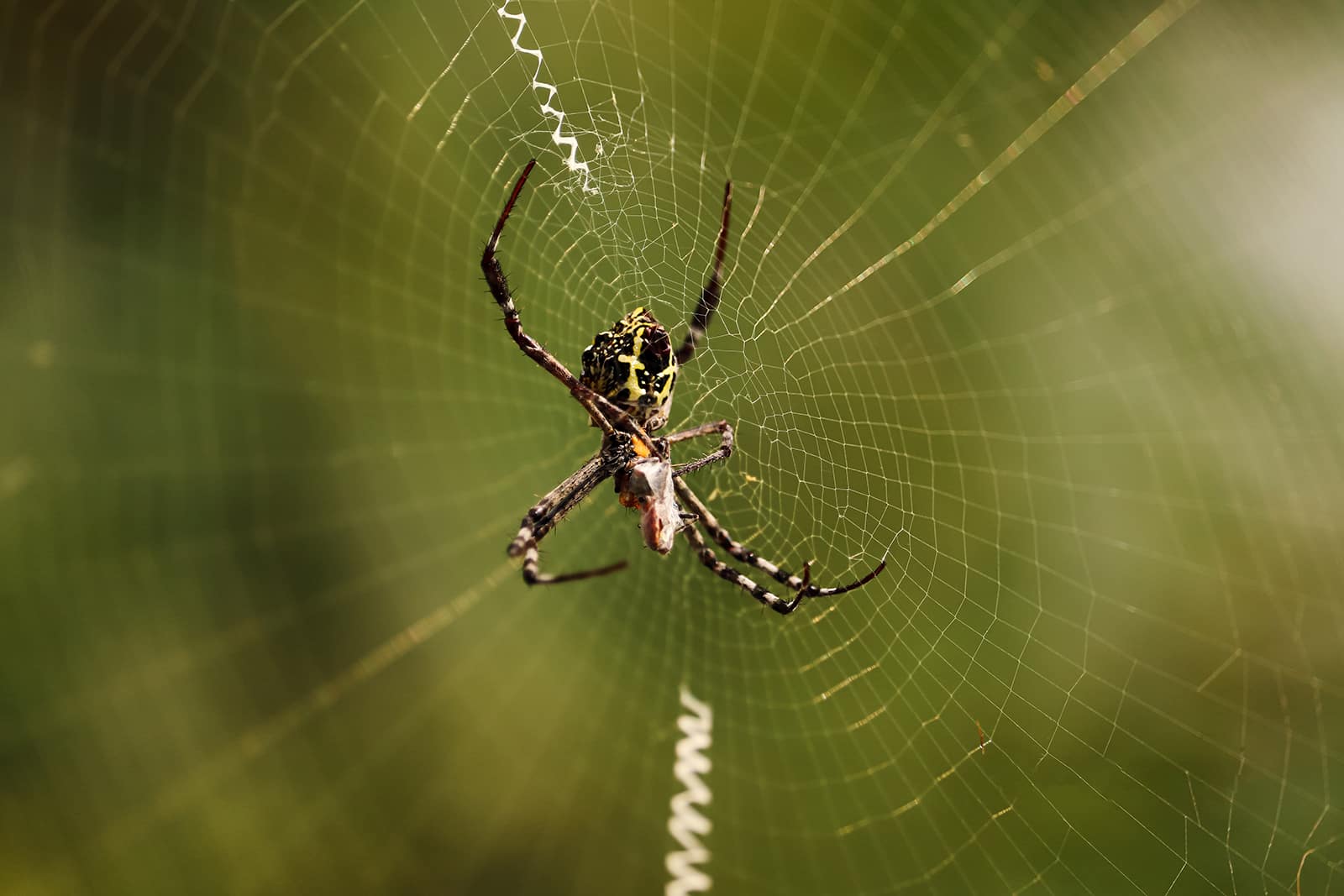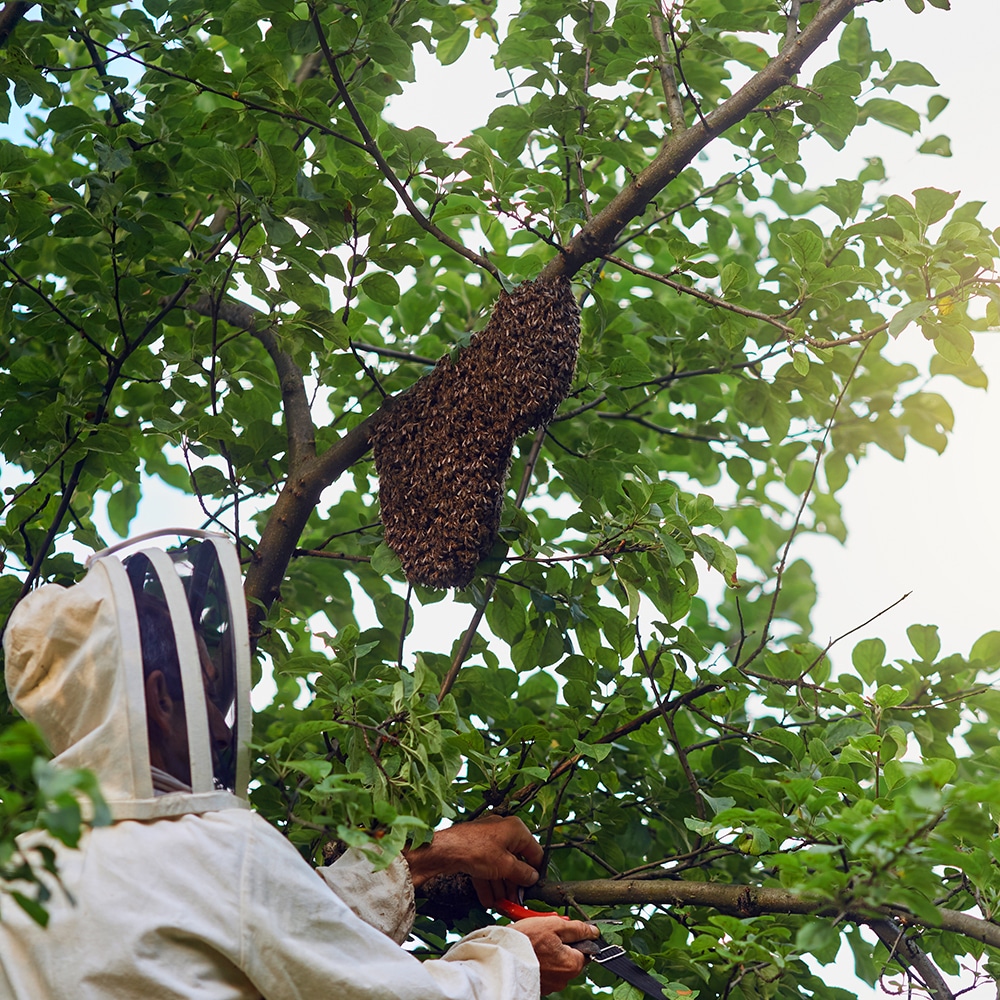
Why Do Spiders Come Back And Why
Why Do Spiders Come Back And Why On The Central Coast NSW. Responsive Proactive Solutions. Detail-focused for lasting results. Call Adam on 0431 222 894
Scheduling DIY Pest Control Tasks is essential for a pest-free home. On the Central Coast NSW, it ensures your home stays comfortable and healthy. With Vital Pest Control, you gain reliable and trustworthy guidance. Let’s dive into effective strategies for managing these tasks.
Weekly vs Monthly Routine
Decide between a weekly or monthly routine based on pest activity. A weekly schedule suits active seasons. Monthly checks work during quieter months. This flexibility ensures fast and responsive pest management.
Seasonal Variations
Adjust your DIY pest control tasks with the seasons. In Central Coast NSW, summer sees more pests. Increase your efforts during these months to maintain quality over quantity in your control approach.
Monitoring Known Hotspots
Regularly check known pest hotspots like kitchens and bathrooms. This proactive step helps in early detection and control, ensuring a comfortable home environment.
Inspecting Basements and Attics
Don’t forget basements and attics. These areas often harbour pests. Frequent inspections prevent infestations, keeping your home safe and sound.
Rotating Pesticide Categories
Rotate pesticide categories to prevent pest resistance. This strategy maintains effectiveness and ensures your efforts are efficient and responsive.
Using a Pest Diary for Sightings
Keep a pest diary. Note down sightings and patterns. This record aids in understanding pest behaviour, helping tailor your control methods effectively.
Setting Phone Reminders
Use phone reminders for consistent scheduling. Alerts ensure you never miss a task, promoting reliable and continuous pest management.
Delegating Tasks Among Household
Share tasks among household members. This teamwork approach makes pest control manageable and less burdensome, fostering a collaborative home environment.
Discover how we can help you today! Get in touch at Contact

In Central Coast NSW, managing pest control tasks involves choosing between a weekly or monthly routine. This decision impacts effectiveness and convenience, particularly for DIY enthusiasts. Understanding the benefits and drawbacks of each schedule helps optimise pest management efforts.
Weekly Routine: Consistent Vigilance
A weekly routine provides regular oversight, ideal for areas prone to pest infestations. Frequent inspections allow for early detection of pest activity, reducing the risk of major infestations. This schedule suits households with gardens or pets, where pests are more prevalent. However, a weekly routine demands more time and consistency, which might be challenging for those with busy schedules. Still, the peace of mind and potentially lower pest activity make it a worthwhile consideration for many.
Monthly Routine: Balanced Approach
Opting for a monthly routine offers a balanced approach to pest control. This schedule suits less vulnerable properties or those with limited pest activity. Monthly checks provide ample time to address minor issues before they escalate. It requires less frequent commitment, fitting well with a busy lifestyle. However, this interval might allow certain pests to establish themselves if not monitored closely. Regular, thorough inspections during each session are crucial to maintain control.
Choosing between a weekly or monthly routine for vital pest control hinges on the specific needs of your property. Consider factors like pest activity, time availability, and lifestyle to determine the best approach for effective pest management in Central Coast NSW.
On the Central Coast of NSW, seasonal variations significantly impact pest activity, making it vital for homeowners to adapt their pest control strategies throughout the year. Understanding these changes can help in scheduling effective DIY pest control tasks to keep infestations at bay.
Spring Awakening
As spring arrives, warmth and humidity increase, waking many pests from dormancy. Ants, spiders, and bees become more active, seeking food and new nesting grounds. This season is ideal for inspecting your home for entry points and sealing them. Regularly cleaning and removing debris from gardens can also deter pests from settling near your home.
Summer Surge
Summer brings an influx of pests like mosquitoes, cockroaches, and flies due to the hot and humid climate. Implementing measures such as using insect screens on windows and doors, disposing of garbage promptly, and eliminating standing water can significantly reduce their numbers. Consider natural repellents and traps to manage the population effectively.
Autumn Adjustments
During autumn, pests such as rodents and spiders start seeking shelter indoors as temperatures drop. It’s crucial to inspect your home for cracks and holes, especially around the foundation and roofline, to prevent these invaders. Setting up traps and maintaining a tidy environment can discourage them from taking refuge inside.
Winter Watch
While pest activity generally decreases in winter, some pests like rodents may become more persistent in seeking warmth. Regularly check attics, basements, and garages for signs of infestation. Maintaining a clean home and removing potential nesting materials can help manage any winter pest issues.
Monitoring known hotspots for pest control on the Central Coast NSW is crucial for maintaining a pest-free environment. Regular inspections and targeted treatments can help prevent infestations from becoming unmanageable. Identifying these hotspots allows homeowners to focus their DIY pest control efforts effectively, saving time and resources.
Identifying Common Pests
Understanding the types of pests commonly found in the Central Coast region is the first step. From termites to cockroaches, knowing what to look for can help you pinpoint problem areas. Each pest has specific habitats and behaviours, making it essential to recognise signs of their presence early.
Inspecting Entry Points
Regularly check potential entry points like gaps in windows, doors, and foundation cracks. These areas often serve as gateways for pests. Sealing these can drastically reduce the chances of an infestation, providing a simple yet effective DIY solution.
Monitoring Food Sources
Ensure that food sources are stored properly. Pests are often attracted to food remnants left out in the open. Regular cleaning and storing food in airtight containers can help deter pests from invading your home.
Utilising Traps and Baits
Place traps and baits in high-risk areas to monitor pest activity. This proactive approach allows you to gauge the severity of an infestation. Early detection through monitoring can guide further DIY pest control actions.
Inspecting basements and attics is crucial for effective pest control, especially on the Central Coast of NSW. These hidden areas often harbour pests due to their secluded nature. Regular checks can prevent infestations and save on costly treatments. Spotting signs early allows for swift action, keeping your home pest-free.
Recognising Pest Entry Points
Basements and attics often have small gaps and cracks that serve as entry points for pests. Look for spaces around pipes, vents, and windows. Even tiny openings can invite rodents and insects. Seal these gaps to block entry and maintain a secure home environment.
Identifying Pest Indicators
During inspections, search for droppings, nests, and damaged materials. These signs indicate pest presence. Pay attention to unusual smells or sounds, like scratching. Immediate action upon discovering these indicators can prevent larger infestations.
Assessing Moisture Levels
Damp areas in basements and attics attract pests like termites and mould. Check for leaks or water accumulation. Proper ventilation and dehumidifiers help control moisture, making these spaces less inviting to pests.
Utilising Natural Deterrents
Incorporate natural deterrents such as peppermint oil or diatomaceous earth. These can be effective in keeping pests at bay. Regular cleaning and decluttering also remove potential nesting sites, contributing to a pest-free environment.
Rotating pesticide categories is a crucial strategy for effective pest control on the Central Coast of NSW. By changing the types of pesticides used, you can prevent pests from developing resistance, ensuring long-term success in keeping your home pest-free. This approach is particularly beneficial for DIY pest control enthusiasts who want to manage pests effectively without professional help.
Understanding Pesticide Resistance
Pesticide resistance occurs when pests adapt to a specific chemical, rendering it ineffective. This is a common issue when the same pesticide is used repeatedly. Rotating pesticide categories disrupts this adaptation process, maintaining the efficacy of your pest control efforts. By varying your approach, you can tackle different generations of pests with fresh strategies, keeping them on their toes.
Choosing the Right Categories
When selecting pesticide categories, consider products from different chemical groups. Each group targets pests in unique ways. For instance, one pesticide may disrupt a pest’s nervous system, while another affects its growth. By alternating between these groups, you can cover a broader spectrum of pest vulnerabilities, reducing the risk of resistance and ensuring comprehensive control.
Implementing a Rotation Schedule
To implement an effective rotation schedule, plan your pest control tasks seasonally. On the Central Coast, certain pests are more prevalent in specific seasons. Adjust your pesticide choices accordingly, ensuring you’re always one step ahead. By keeping a record of products used and their effectiveness, you can refine your strategy over time, achieving optimal results.
Keeping a pest diary is a smart strategy for managing DIY pest control tasks on the Central Coast, NSW. A well-maintained pest diary helps track pest sightings, patterns, and behaviours, providing valuable insights for effective pest management. This tool can significantly enhance your efforts in identifying, controlling, and preventing infestations.
Identifying Pest Hotspots
By recording pest sightings in a diary, you can pinpoint areas in your home where pests frequently appear. This information allows you to focus your DIY pest control efforts on these hotspots, ensuring your actions are targeted and effective. Regularly updating your diary helps in recognising patterns that might otherwise go unnoticed.
Understanding Seasonal Trends
A pest diary is invaluable for understanding how different seasons impact pest activity. Noting the dates and times of sightings can reveal seasonal trends, enabling you to anticipate and prepare for peak pest periods. This proactive approach can prevent infestations before they start, saving time and resources.
Enhancing Communication with Professionals
When DIY efforts are not enough, a detailed pest diary becomes a vital tool for communicating with pest control professionals. Sharing accurate records of sightings and behaviours helps experts devise tailored strategies, ensuring effective pest eradication. This collaboration maximises the benefits of professional services while optimising your DIY efforts.
Setting phone reminders for pest control tasks on the Central Coast NSW is a smart way to ensure your home stays pest-free. With the region’s unique climate, regular attention to pest management is crucial. By using technology like phone reminders, homeowners can effectively maintain a schedule that keeps pests at bay without the hassle of remembering each task manually.
Advantages of Phone Reminders
Phone reminders offer a convenient way to keep track of pest control activities. They ensure you don’t miss essential tasks like applying treatments or checking traps. These reminders can be set to recur, making them perfect for regular pest control routines. By leveraging this technology, you can stay organised and proactive, preventing infestations before they start.
Customising Reminders for Different Pests
Different pests require different approaches. Customise your phone reminders based on specific needs, such as termite inspections or spider treatments. Tailoring reminders to particular pests ensures that you address each threat effectively. This customisation helps in allocating resources efficiently, saving time and effort in the long run.
Integrating with Family Schedules
Integrating pest control reminders with family schedules increases efficiency. Share these reminders with family members to distribute the workload. This teamwork approach not only makes pest control more manageable but also educates family members about maintaining a pest-free environment. Such collaboration ensures that everyone plays a role in keeping the house secure from unwanted intruders.
Managing pest control in a bustling household can be challenging. For those living on the Central Coast of NSW, delegating tasks effectively ensures vital pest control measures are handled smoothly. By involving everyone in the household, you can maintain a cleaner, pest-free environment with less stress.
Assigning Specific Roles
To start, assign specific roles based on individual strengths. Some may excel at identifying pest hotspots, while others might handle cleaning or maintenance tasks. By distributing responsibilities, everyone contributes to a pest-free home. This approach also fosters teamwork and ensures that no one person feels overwhelmed by the workload.
Setting Clear Schedules
Creating a clear schedule is crucial for effective pest control. Decide which tasks need to be done daily, weekly, or monthly. For instance, regular rubbish disposal should be a daily task, while inspecting the garden can be a weekly duty. Having a visible schedule helps everyone stay on track and ensures consistency in pest management efforts.
Encouraging Communication
Open communication is key when delegating tasks. Encourage household members to report any pest sightings immediately. This allows for quick action, preventing infestations from becoming a larger issue. Regular check-ins can also help assess how well tasks are being performed and if any adjustments are needed.
Maintaining a healthy garden while ensuring effective pest control on the Central Coast NSW can be a delicate balancing act. With DIY pest control tasks, timing becomes crucial to avoid overlap with other yard treatments. This ensures that both your garden and pest control efforts remain effective and efficient.
Understanding Treatment Schedules
Knowing when to apply different treatments is vital. Fertilisers, herbicides, and insecticides often require distinct timeframes to maximise their effectiveness. Overlapping these treatments can lead to reduced efficacy or even harmful interactions. Create a calendar that tracks each treatment type, ensuring ample time between applications.
Monitoring Weather Conditions
Weather plays a significant role in how treatments perform. Rain can wash away chemicals, while extreme heat may cause them to evaporate quickly. Understanding local weather patterns helps in planning the best days for application. Checking forecasts ensures that your efforts are not wasted due to unexpected conditions.
Consulting with Experts
For homeowners unsure about scheduling, consulting with pest control experts can provide valuable insights. Professionals have the experience to suggest optimal timing and methods, reducing the risk of treatment overlap. Leveraging their knowledge ensures your yard remains both pest-free and vibrant.
Identifying trouble zones on your property is essential for effective pest control on the Central Coast, NSW. By knowing where pests are most likely to thrive, you can better focus your DIY pest management efforts. This proactive approach not only saves time but also helps prevent larger infestations.
Spotting Entry Points
Pests often enter through tiny cracks and gaps in walls, windows, and doors. Inspect these areas carefully, looking for signs of wear or damage. Pay special attention to areas where utilities like pipes and cables enter your home, as these are common entry points for pests. Sealing these gaps can significantly reduce pest access.
Inspecting Damp Areas
Damp zones, such as under sinks or around leaky pipes, attract pests like cockroaches and termites. These areas provide the moisture pests need to survive. Regularly check for leaks and fix them promptly. Keeping these spaces dry and well-ventilated can deter pests from settling in.
Checking Gardens and Yards
Your garden can be a haven for pests. Overgrown vegetation, piles of leaves, and standing water create an inviting environment. Regularly trim plants, clear debris, and ensure proper drainage. This reduces pest habitats, making your property less attractive to unwanted critters.
Managing your pest control supply inventory on the Central Coast is essential for efficiency and effectiveness. An organised inventory ensures you’re always prepared for any pest challenge. Here’s how you can keep track effectively.
Create an Inventory List
Begin by listing all the pest control supplies you have. Include items like insecticides, traps, baits, and protective gear. This comprehensive list helps you see what you have and what you might need soon. Regular updates to this list prevent last-minute shortages.
Implement a Labelling System
Clearly label each product with its name, purchase date, and expiry date. This practice not only aids in quick identification but also ensures you use products before they expire. By rotating your stock, you avoid wastage and maintain effective pest control treatments.
Set Reorder Points
Determine critical levels for each item when it’s time to reorder. Setting reorder points ensures you always have necessary supplies on hand. This proactive approach prevents disruptions in your pest control routine, keeping your property pest-free.
Staying organised with your supply inventory not only saves time but also enhances the effectiveness of your pest control efforts on the Central Coast. By implementing these strategies, you ensure a seamless and efficient DIY pest control process.
Integrating cleaning routines into your pest control strategy on the Central Coast NSW is vital for keeping unwanted critters at bay. Regular cleaning not only removes food sources and potential nesting sites but also helps in identifying early signs of infestation. By combining thorough cleaning with your pest control efforts, you can create an inhospitable environment for pests, ensuring a healthier and more comfortable living space.
Regular Kitchen Clean-Up
In the kitchen, crumbs and spills can attract pests like ants and cockroaches. Wipe down surfaces daily, paying close attention to areas like countertops and under appliances. Regularly clean cupboards and pantry shelves, checking for any signs of pest activity such as droppings or chewed packaging. Taking out the rubbish regularly also helps in reducing the attraction for pests.
Bathroom Maintenance
Bathrooms can become a breeding ground for pests like silverfish and cockroaches due to moisture and hidden food sources like hair and soap. Clean sinks, showers, and drains frequently to avoid build-up. Keep the bathroom well-ventilated to reduce humidity, a key factor in pest attraction. Fix leaky taps to prevent water accumulation.
Outdoor Area Vigilance
Outside areas around your home are equally important. Keep the garden free from debris and standing water, which can attract mosquitoes and other insects. Trim back foliage touching the house as this can act as a bridge for pests. Regularly inspect and clean outdoor furniture and storage areas to prevent nesting.
In the vibrant region of the Central Coast NSW, pest control is essential for maintaining a healthy living environment. With pests constantly adapting, it’s crucial for homeowners engaged in DIY pest control to adjust their approach accordingly. Understanding pest behaviour and implementing flexible strategies can help ensure effective control.
Observe Changes in Pest Behaviour
Keeping a close eye on pest activity can reveal if your current methods are losing effectiveness. Pests may develop resistance or change their habits to avoid traps or baits. Regular monitoring allows you to notice these shifts promptly, helping you to tweak your strategy before infestations grow.
Rotate Pest Control Methods
Diversifying your approach can prevent pests from adapting easily. Switching between different traps, baits, or natural repellents can confuse pests, reducing their chances of developing resistance. This variety can maintain the effectiveness of your pest control efforts over time.
Utilise Natural Predators
Introducing or encouraging natural predators can be an effective strategy. Birds, spiders, and beneficial insects can help control pest populations naturally. Creating a garden environment that supports these predators can reduce reliance on chemical solutions, offering a sustainable approach.
Seek Professional Advice
When pests seem to outsmart your DIY efforts, consulting a professional can provide new insights. Experts like Vital Pest Control on the Central Coast have the knowledge to identify specific adaptations and recommend advanced techniques tailored to your situation.
In the picturesque Central Coast of NSW, managing pest control can sometimes feel like an endless task. While DIY methods often suffice, there are times when escalation is necessary. Deciding when to call in the professionals can save both time and effort, ensuring that your home remains a safe haven from unwelcome guests.
Recognising the Signs of Infestation
It’s crucial to identify the early signs of a pest problem before it escalates. Look for tell-tale indicators such as droppings, chewed materials, or unusual noises. If these signs are persistent, it might be time to consider professional intervention. Quick action can prevent small issues from becoming severe infestations.
Assessing the Risks
The Central Coast’s warm climate is ideal for many pests, such as termites and cockroaches. These pests pose specific threats to the structural integrity of homes. If DIY methods aren’t keeping them at bay, it’s wise to call experts. They have the tools and expertise to handle such risks effectively.
Evaluating the Effectiveness of DIY Methods
Home remedies for pest control can be hit or miss. If your efforts don’t show results after a reasonable period, professional services might be warranted. Experts offer comprehensive solutions that often address the root cause, ensuring long-term relief from pests.
Monitoring and documenting the changes in pest activity each year is crucial for effective pest control on the Central Coast, NSW. Understanding these changes helps in tailoring DIY pest control strategies and maintaining a pest-free environment.
Identify Seasonal Patterns
Recognising the seasonal patterns of pests can significantly enhance your pest control efforts. For instance, ants might be more active during the warmer months, while rodents often seek shelter indoors during the colder seasons. Documenting these patterns annually helps in predicting pest behaviour and preparing appropriate control measures in advance.
Track Pest Infestation Levels
Keeping a record of pest infestation levels year to year allows you to assess whether your current DIY methods are effective. Note any changes in pest population or new pest types. This information can guide you in adjusting your pest control strategies, ensuring they remain effective against evolving pest challenges.
Evaluate Control Method Effectiveness
Regularly reviewing the effectiveness of your pest control methods is essential. Document the results of each DIY task, noting what works and what doesn’t. This evaluation helps in refining your approach, ensuring that your strategies remain efficient in managing pests on the Central Coast.
Utilise Historical Data for Better Planning
Historical data provides valuable insights into pest trends. By analysing past records, you can anticipate potential pest problems and prepare accordingly. This proactive approach not only saves time and resources but also minimises the risk of infestations.
Please leave your details in the form and we will call you back the same day.
So that we can process your enquire efficiently please leave as many details as possible and upload any relevant images. (.jpg and .png format)

Why Do Spiders Come Back And Why On The Central Coast NSW. Responsive Proactive Solutions. Detail-focused for lasting results. Call Adam on 0431 222 894

Building a Long Term Residential Pest Protection Plan For Home Owners On The Central Coast NSW. Responsive Proactive Solutions. Detail-focused for lasting results. Call Adam on 0431 222 894

How to Protect Your Home from Wasp Infestations On The Central Coast NSW. Responsive Proactive Solutions. Detail-focused for lasting results. Call Adam on 0431 222 894